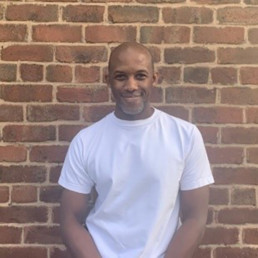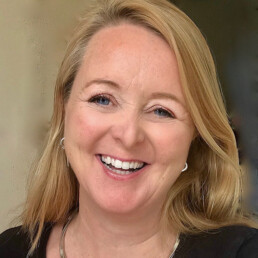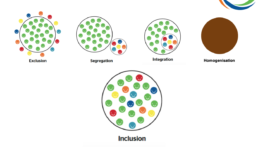Tuesday 25th May 2021

Written by Darren Crosdale
English and Media Studies-trained teacher, currently working in a large Liverpool comprehensive
This date will mark a year to the day of George Floyd’s murder. I use the word ‘murder’ deliberately because, despite the arguments that lawyers will no doubt make to the contrary, the world possesses clear, video evidence that it was murder, plain and simple.
I still have not seen the clip. I never will. To watch such imagery is, to my mind, self-flagellation. I do not engage in that torture and warn my family – especially my social media-addicted daughter – to think very carefully about the emotional toll such images can have on our psyche.
As the above date approaches, you can rest assured there will be blogs and vlogs and articles and news items asking how the world has “changed”. How that 8 minute and 46 second horror short and the resulting worldwide protests “changed” many aspects of society, including education. Like most teachers, I firmly believe in the power of education and I will definitely be curious about how the education world has “changed” following George Floyd’s murder. Up and down the UK, family, friends, colleagues and associates have responded to the Black Lives Matter movement with renewed vigour: change the curriculum; review the policies; train the teachers.
But as Frederick Douglass, the former slave turned writer and public speaker said: “Power does not concede without a demand.” I am not, at all, the only person who feels that the demands of racism are being placed on the shoulders of the victims. Such bitter irony. The stereotypes that we as thinking and evolving societies ought to have defeated centuries ago, remain: lower intelligence, higher physicality, unworthy histories. The list is, of course, longer and more subtle than this.
As an eternal optimist, I focus on the notion of things getting better in schools. I have to believe this. However, as an eternal optimist with a good memory, I recall that we have been here before. We have collectively focussed on “changing” our racist societies and racist institutions and racist individuals’ attitudes before. The whole country has been engaged in the discussion of diversity and inclusion and breaking barriers and moving forward more times than I care to count in my own lifetime.
The UK broached the topic of change after Stephen Lawrence’s murder in 1993 and the McPherson Report, four years later, made the term “institutional racism”, more mainstream. I worked in the Merseyside school that Anthony Walker, murdered in a racist attack in 2005, used to attend. People often forget that his White killers attended the school, alongside this wonderful young man. The Department for Children, Schools and Families examined the issue of Black educational attainment in 2007. Alexander Paul, an 18 year-old student from south London, gave a powerful presentation about being stopped and searched at the 2014 Conservative Party Conference. David Lammy, MP, in 2017 reviewed how ethnic minorities fared when they came into contact with the criminal justice system. I am not even going to discuss the coronavirus. The UK, a country that likes to boast about its multi-cultural status, ended up with one of the highest per capita death rates in 2020, and ethnic minorities were over-represented in these numbers as were the poor and public-facing workers.
Schools are especially busy as I write, early October, 2020. Most schools are engaged in some form of analysis: reviewing data, auditing curricula, employing speakers to deliver staff training. Will all these efforts to change the UK’s complicated attitude towards Black people in the education system yield results, however? There are still those on Twitter who struggle to link police brutality in the US with education in the UK (and, of course, fail to recognise this, in itself, is highly ironic.). So what if GCSE students, in 2020, do not study texts written by Black writers? So what if students do not learn the dual nature of Churchill? Wartime hero but also responsible for allowing three million Bengalis to starve. So what if students have no idea of the fuss surrounding Edward Colston’s statue being tossed into Bristol harbour.
What will schools be like by May 25th 2021? Will the government recognise that for all the past reviews and examinations of race, deep divisions and inequalities remain? Will the councils creating Task Forces to examine racial issues in their towns and cities create lasting change? Will enough school-based staff have had the necessary and uncomfortable conversations around race? Robin DiAngelo, in her best seller ‘White Fragility’ explains that middle-aged, middle-class white women are most likely to cry if their racial view of the world is challenged in any way. Will enough of these tears be transmuted into new ways of thinking and challenging the status quo?
The answers to these questions remain to be seen. We know our government has been remarkably quiet about the Black Lives Matter movement. The protests threw a much-needed light on our society and its continuing struggles with race – mostly because the education system has never properly learned to discuss our troubled history in an honest and guilt-free manner.
I watched BBC presenter Daniel Henry’s inspirational documentary ‘Fighting the Power: Britain after George Floyd’ (directed by Eddie Hutton-Mills) and wondered about the young Black women who, with their passion and social media savvy, organised huge marches in lockdown London during the summer of 2020. Will they be disappointed in a year’s time? Will they have noticed any changes? Will prime minister Johnson’s racial disparity review (led by a controversial Munira Mirza who is not quite sure if institutional racisms exists) have reported back by then? Who knows?
What I do know is that for the children in school at the moment – all children, not just the Black ones – carrying on as if huge protests about race never happened, as if things do not need a good shaking and sorting, as if their teachers do not need to learn about all types of inequality, is not an acceptable option.
Darren Crosdale
www.blackteachersanecdotes.co.uk
Diversity and inclusion - why are they not easy bedfellows?

Written by Amanda Gummer
20 years experience working with children and families
Two very hot topics at the moment but the approaches to increase diversity and improve inclusion can seem to conflict with each other, preventing either of them from being fully achieved. In order to achieve true diversity and inclusion we need to rethink some of the accepted wisdom.
When we talk about inclusion, we are often referring to disabilities and making sure children with additional needs are able to access the play or developmental opportunities that other children can. Similarly, when we talk about diversity, we’re usually talking about race, and occasionally gender. However, to truly be inclusive and diverse, we need to look outside of physical, and even mental conditions, and consider factors such as culture, geography, socio-economic status, and age. Only then can we achieve full inclusion and by breaking down those barriers we will automatically increase diversity. First, it is helpful to look at the evolution in our approach to inclusion. The same diagram can be used for diversity.

However, not everyone is on the same journey or going at the same speed on this. For example, many playgrounds were commissioned decades ago when the concept of inclusion wasn’t a priority – at best, there was a single, wheel-chair accessible piece of equipment – very little consideration was given to other disabilities and conditions which impact a child’s ability to play.
The toy industry has been stuck using the segregation approach for years – toys designed for children with additional needs are not readily available in mass-market toy shops or supermarkets and so are not able to benefit from the economies of scale of the most popular toy brands and are therefore more expensive and seen as very niche.
Clearly segregation is where the diversity movement started. Integration wasn’t much better for increasing racial tolerance and appreciating individual differences, but I think that the biggest backwards step was when, possibly with the best of intentions, we moved towards homogenisation. The principle being that if not everyone could have something, no one should. So everything became bland – we introduced a national curriculum which meant that children in a vibrant inner city school couldn’t make the most of the opportunities in their community because the kids in the rural village school didn’t have the same access, and children living in the countryside with access to lots of space and natural resources were not able to make the most of that in their education because it wasn’t accessible to the kids in the inner cities. Examples of this one-size-fits-all approach can be seen in lots of walks of life – from the rise in chain stores and the loss of individual towns’ personalities, to pre-packaging of food, fast fashion – the list goes on.
The result? An education system that is inflexible with very narrow definitions of success, playgrounds that are vandalised and misused because they’re not inclusive enough (not enough children are using them for them to be seen as a community asset and protected by the people in those communities), High Fat Salt and Sugar packaged foods, and a loss of character on our high streets. This all contributes to a lack of understanding and appreciation of individual differences and differing needs. And it is time for that to change.
I’m focussing on toys and play as that’s what I know but I’m fairly certain this is relevant in a lot of other arenas. We need to take some bold steps and recognise that true inclusion comes from appreciating children’s differences – and this naturally leads to more diversity. By considering all of the potential barriers to inclusion and working to remove them we are automatically increasing diversity. A playground that includes challenging risky play will not only appeal to children with ADHD but will also be used by older children and maybe those who can’t afford to go to the theme parks but crave a bit of an adrenaline rush. Understanding the dress codes of different cultures allows equipment to be included that doesn’t require climbing or leg lifting and is accessible to children in those clothes, as well as children on crutches.
So what’s to be done. Well first of all we need to get rid of the tokenism or ‘inclusion theatre’ all the things that look good and seem like they are promoting inclusion but are not based on any evidence and in the worst cases may actually be impeding inclusivity. To be truly inclusive and increase diversity, we need to take an evidence-based approach and include consultation with all stakeholders – whether that’s in town planning, toy design, playground procurement or shop layouts.
We also need to realise that a single product/brand/service can’t be all things to all people but should be accessible and relatable to by the people it’s designed for. A toy can not be multisensory and stimulating whilst also being quiet and relaxing. The important thing is to make sure that everyone’s needs are respected and catered for overall.
It’s really not rocket science but we need to update our approaches to both inclusion and diversity if we’re ever to really achieve either.
Amanda is a research psychologist and founder of the Good Play Guide: www.goodplayguide.com
What does it mean for education to be diverse and inclusive?
Education is without a doubt the most transformative force in society. Education lifts people out of poverty, it opens up choices with regards to the livelihoods they can pursue, and it empowers them to challenge the status quo. But education has a diversity and inclusion problem. Like any social institution, it is rooted in its history and has evolved within a system predominantly designed by white men. This means that much of the curriculum is based on the thinking, insights and mindsets of white men who were taught by other white men who came before them. There has been some progress in addressing this and making education more inclusive.
Many educational institutions have developed policies to promote equality, diversity and widening access and success, yet statistics consistently show students from a minority ethnic background are underrepresented in many disciplines within Higher Education. There is also a significant gap in the success rates with students from ethnic minority backgrounds consistently lagging behind their white counterparts. When we look below the surface of the marketing materials provided by many educational institutions – which show diverse students smiling and having a good time – these images do not necessarily reflect the experience of learners from a diversity of backgrounds.
As the recent surge in Black Lives Matter protests illustrates, we do not yet live in a society where everyone feels safe and included. Quite the opposite, this global movement has illustrated that large sections of our society face oppression and exclusion as part of their daily lived experience, including experiences within education. The fact that this experience has remained largely under the radar of white privilege does not make it any less real and urgent.
Now what would it mean for education to be more diverse and inclusive, and what steps can we take to move in the right direction beyond articulating policies and providing diverse images in marketing materials?
First of all, it is essential that education explicitly addresses its own biases and blind-spots and actively works to incorporate a more diverse range of voices within the curriculum. This means including works from authors and theorists who represent under-represented groups within society because of their gender, race, sexual orientation or other relevant characteristics.
Secondly, it means making the contested nature of knowledge explicit and encouraging active debate among students about how many current perspectives and understandings are rooted in white privilege and promote insights which serve the interests of an establishment that promotes the interests of some over the interests of others.
Thirdly, it means transforming some of metaphors prevalent within educational institutions. Masculine metaphors around competition dominate within educational discourse and education is seen as a competitive battle among students for the best grades and a competitive battle for institutions to acquire the “best and brightest” students. We should instead be shifting these metaphors to something more grounded in collaboration and sustainable growth. Life doesn’t need to be seen as a competitive struggle for survival – and opportunity does not need to be presented as a cake with a limited number of slices.
Fourthly, it requires educational institutions change their recruitment, development and promotion practices so that these are effective at removing any barriers for minority applicants and staff to join and develop within an organisation. This includes using blind recruitment processes, balanced recruitment panels which include minority representation and whose members are trained in avoiding the adverse impact of unconscious bias, as well as a range of development programmes aimed at supporting minority staff to develop as part of their role.
These four steps form a starting point for addressing issues of diversity and inclusion in education, and responsibility for their implementing very much lies in the hands of the those in leadership positions in our educational institutions. However, the systemic issues cannot be addressed within our education institutions alone and require the active participation of the media, arts, literature, and other institutions in stopping the damaging stories and limiting expectations which give rise to access and success barriers in education and beyond.
Bio
Jitse van Ameijde is a social entrepreneur and founder of Social Change Academy – a social enterprise focused on the development of tomorrow’s change makers passionate to make a positive difference to the lives of others. Originally from the Netherlands, Jitse came to the UK to finish his Masters in Social and Organisational Psychology, and ended up working for the Open University where he worked on the design of distance learning experiences and taught systems thinking in practice as an Associate Lecturer. He is passionate about issues of inclusion, social justice, and equal opportunities for all regardless of their past.
Jitse van Ameijde is the founder of the Social Change Academy: https://www.socialchangeacademy.org/founder/


